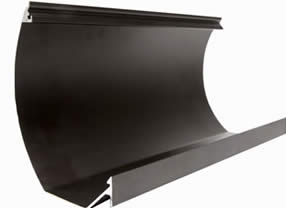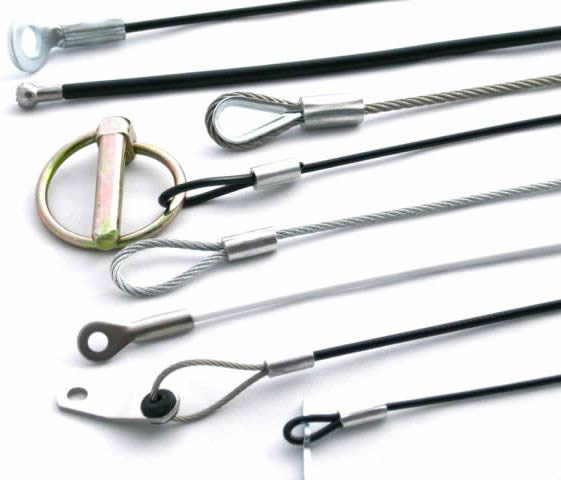Laser cutting is a technology that uses a laser to cut materials, and is typically used for industrial manufacturing applications, but is also starting to be used by schools, small businesses and hobbyists. Laser cutting works by directing the output of a high-power laser, by computer, at the material to be cut. Industrial laser cutters are used to cut flat-sheet material as well as structural and piping materials.
 Laser Cutting Processing
Laser Cutting Processing
There are three main types of lasers used in laser cutting. The CO2 laser is suited for cutting, boring, and engraving. The neodymium (Nd) and neodymium yttrium-aluminum-garnet (Nd-YAG) lasers are identical in style and differ only in application. The Nd-YAG laser is used where very high power is needed and for boring and engraving. Both CO2 and Nd/ Nd-YAG lasers can be used for welding.
Common variants of CO2 lasers include fast axial flow, slow axial flow, transverse flow, and slab. CO2 lasers are commonly “pumped” by passing a current through the gas mix (DC-excited) or using radio frequency energy (RF-excited). Since DC designs require electrodes inside the cavity, they can encounter electrode erosion and plating of electrode material on glassware and optics. CO2 lasers are used for industrial cutting of many materials including mild steel, aluminum, stainless steel, titanium, paper, wax, plastics, wood, and fabrics. YAG lasers are primarily used for cutting and scribing metals and ceramics.
The CO2 laser is suited for cutting, boring, and engraving
In addition to the power source, the type of gas flow can affect performance as well. Transverse flow lasers circulate the gas mix at a lower velocity, requiring a simpler blower. Slab or diffusion cooled resonators have a static gas field that requires no pressurization or glassware, leading to savings on replacement turbines and glassware. The laser generator and external optics (including the focus lens) require cooling. Water is a commonly used coolant, usually circulated through a chiller or heat transfer system. A laser microjet is a water-jet guided laser in which a pulsed laser beam is coupled into a low-pressure water jet. This is used to perform laser cutting functions while using the water jet to guide the laser beam, much like an optical fiber, through total internal reflection. Additional advantages over traditional “dry” laser cutting are high dicing speeds, parallel kerf and omnidirectional cutting.
Generation of the laser beam involves stimulating a lasing material by electrical discharges or lamps within a closed container. As the lasing material is stimulated, the beam is reflected internally by means of a partial mirror, until it achieves sufficient energy to escape as a stream of monochromatic coherent light. The narrowest part of the focused beam is generally less than 0.0125 in (0.3175 mm). Depending upon material thickness, kerf widths as small as 0.004 in (0.1016 mm) are possible. In order to be able to start cutting from somewhere else than the edge, a pierce is done before every cut.
Laser Engraving
Piercing usually involves a high-power pulsed laser beam which slowly makes a hole in the material, taking around 5–15 seconds for 1?2-inch-thick (13 mm) stainless steel, for example. The parallel rays of coherent light from the laser source often fall in the range between 1/16 inch to 1/2 inch (1.5875 mm to 12.7 mm) in diameter. This beam is normally focused and intensified by a lens or a mirror to a very small spot of about 0.001 inch (0.0254 mm) to create a very intense laser beam. For sheet metal cutting, the focal length is usually between 1.5 inches and 3 inches (38.1 mm and 76.2 mm). There are many different methods in cutting using lasers, with different types used to cut different material. Some of the methods are vaporization, melt and blow, melt blow and burn, thermal stress cracking, scribing, cold cutting and burning stabilized laser cutting.
In vaporization cutting the focused beam heats the surface of the material to boiling point and generates a keyhole. As the hole deepens and the material boils, vapor generated erodes the molten walls blowing ejecta out and further enlarging the hole. Non melting material such as wood, carbon and thermoset plastics are usually cut by this method.
Laser Cutting Products
Melt and blow or fusion cutting uses high-pressure gas to blow molten material from the cutting area, greatly decreasing the power requirement. First the material is heated to melting point then a gas jet blows the molten material out of the kerf avoiding the need to raise the temperature of the material any further. Materials cut with this process are usually metals. Brittle materials are particularly sensitive to thermal fracture, a feature exploited in thermal stress cracking. A beam is focused on the surface causing localized heating and thermal expansion. It is usually used in cutting of glass.
There are generally three different configurations of industrial laser cutting machines: Moving material, Hybrid, and Flying Optics systems. These refer to the way that the laser beam is moved over the material to be cut or processed. If the cutting head may be controlled, it is designated as the Z-axis. Moving material lasers have a stationary cutting head and move the material under it. This method provides a constant distance from the laser generator to the workpiece and a single point from which to remove cutting effluent.
This style machine tends to have the fewest beam delivery optics, but also tends to be the slowest. Hybrid lasers provide a table which moves in one axis (usually the X-axis) and move the head along the shorter (Y) axis. This results in a more constant beam delivery path length than a flying optic machine and may permit a simpler beam delivery system. This can result in reduced power loss in the delivery system and more capacity per watt than flying optics machines.Flying optics lasers feature a stationary table and a cutting head (with laser beam) that moves over the workpiece in both of the horizontal dimensions. Flying optics cutters keep the workpiece stationary during processing and often do not require material clamping. Flying optics machines are the fastest type, which is advantageous when cutting thinner workpieces.
Flying optic machines must use some method to take into account the changing beam length from near field (close to resonator) cutting to far field (far away from resonator) cutting. Common methods for controlling this include collimation, adaptive optics or the use of a constant beam length axis. The above is written about X-Y systems for cutting flat materials. The same discussion applies to five and six-axis machines, which permit cutting formed workpieces. In addition, there are various methods of orienting the laser beam to a shaped workpiece, maintaining a proper focus distance and nozzle standoff, etc.
Laser cutting machines can accurately produce complex exterior contours. The laser beam is typically 0.2 mm (0.008 in) diameter at the cutting surface with a power of 1000 to 2000 watts. Laser cutting can be complementary to the CNC/Turret process. The CNC/Turret process can produce internal features such as holes readily whereas the laser cutting process can produce external complex features easily.
Laser cutting takes direct input in the form of electronic data from a CAD drawing to produce flat form parts of great complexity. With 3-axis control, the laser cutting process can profile parts after they have been formed on the CNC/Turret process. Lasers work best on materials such as carbon steel or stainless steels. Lasers cut by melting the material in the beam path. Materials that are heat treatable will get case hardened at the cut edges. This may be beneficial if the hardened edges are functionally desirable in the finished parts.
A hole cut with a laser has an entry diameter larger than the exit diameter, creating a slightly tapered hole. Unlike blanking, piercing, and forming, the normal design rules regarding minimum wall thicknesses, minimum hole size (as a percent of stock thickness) do not apply. The minimum hole sizes are related to stock thickness and can be as low as 20% of the stock thickness, with a minimum of 0.25 mm (0.010 in) for upto 1.9 mm (0.075 in). Contrast this with normal piercing operations with the recommended hole size 1.2 times the stock thickness.
You might also like
| Transparent Ceramics Transparent ceramics have recently... | Welding Welding is a fabrication or sculptural... | The Nature Inspired Innovation The name biomimetics was coined by... | What is Nanoparticle ? Nanoparticles are particles that have one... |




 Alloy Suppliers
Alloy Suppliers
 Aluminum
Aluminum
 Aluminum Extrusions
Aluminum Extrusions
 Copper-Brass-Bronze
Copper-Brass-Bronze
 Nickel
Nickel
 Magnets
Magnets
 Stainless Steel
Stainless Steel
 Stainless Steel Tubing
Stainless Steel Tubing
 Steel Service Centers
Steel Service Centers
 Titanium
Titanium
 Tungsten
Tungsten
 Wire Rope
Wire Rope